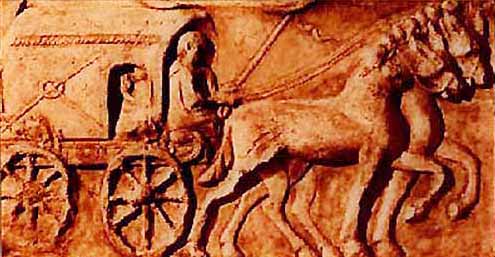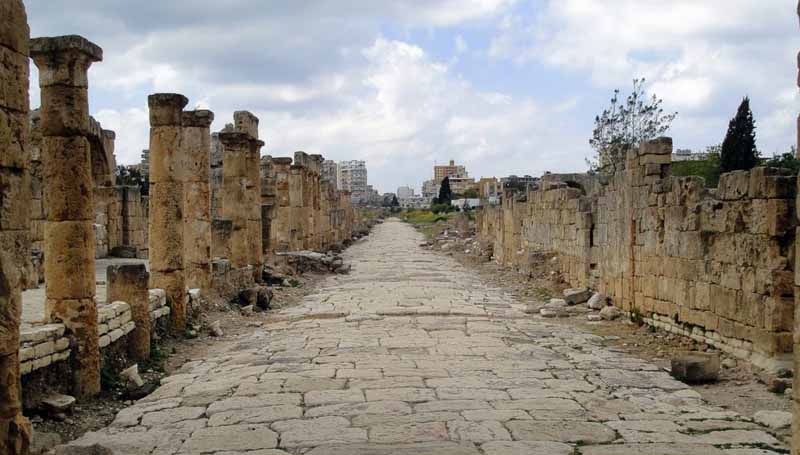

Ancient Romans traveled by land and sea. From earliest times the Romans displayed remarkable skill at building and engineering. They constructed bridges across the river Tiber, aqueducts to supply Rome with water, and sewers to drain the forum and keep the city healthy.

As they expanded their power across Italy, the Romans linked the capital with other communities they had conquered by a network known as the famous Roman roads so well designed that many still lie beneath the motorways of modern Italy.
After the neglect of the provinces during the civil wars, Augustus was determined to improve the infrastructure to promote economic growth. During the first two centuries AD, war was relatively infrequent, and Augustus and his successors kept their troops busy with military construction. A great network of roads, bridges, and canals opened the interior of Gaul to Roman commerce and cultural influence.
Rome's military engineers were skilled surveyors who designed numerous vast projects in the provinces that the troops helped to build: fortified camps, frontier walls, roads, canals, bridges, arches, baths, and temples. These projects and other legionary expenditures helped the provincial economies by providing work for local merchants, craftspeople, farmers, and the usual range of camp followers.
Expansion of the Roman Empire was both facilitated by and an impetus to the development of an efficient system of roads. They were usually built by a consul or other important magistrate, starting in the early Republic.
The roads were important militarily, as they bound together the steadily growing Roman Empire. A good road would shed water during the rainy season and permit travel at a rapid pace during all kinds of weather.
They were surfaced with stone paving blocks, had a drainage ditch on each side and were crowned to shed water. The major Roman roads were built upon a foundation of carefully laid rock which was constructed from a large ditch dug into the underlying earth. In this way, if the ground became waterlogged, a tight foundation layer helped prevent anyone traveling on the road from sinking out of sight in the mud.
City streets were paved with large fitted stones lain upon a foundation of rock also.
Roman civil engineering made it possible for the Romans to travel almost as efficiently by road as by ship, although the Romans usually preferred to travel by sea to towns on the coast, if they were given a choice. Roads were often frequented by bandits and one who traveled without a good company of slaves and armed retainers risked losing his or her life.
The few inns at which a traveler could find lodging for the night were of dubious quality at best and were downright risky at times. Most innkeepers were crooks, the food was bad, and the inns were frequented by cutthroats and drunks. All kinds of lice and other insects infested the bedding, and the traveler might not even find a bed at all because they were all taken by other guests by the time he arrived at the inn.
Occasions for road travel included army officers on business, government magistrates traveling between Rome and their posts, students journeying to Athens to complete their education at the universities there, and imperial postal couriers carrying messages and letters. Travel for enjoyment and long journeys by foot were almost unheard of in Roman society.
The rich often traveled lying down in a litter carried on the shoulders of slaves or seated in a sedan chair, also carried by slaves. Military officers traveled on horseback and the Roman army had stations at which a courier or officer could exchange a tired mount for a fresh one. Intimate knowledge of this system of relay stations enabled the emperor Constantine as a young man to escape the court of Galerius to rejoin his father in Britain.
The streets in Rome and other large cities were crowded and narrow. Freight was delivered by wagons at night, as wagons were banned from the city by day because of the congestion. Travel within the cities was often done on foot by rich and poor alike. The proper way for a wealthy woman of Senatorial rank to travel was by carpentum, a large four wheel covered coach. Additionally, she could travel by litter, just like the men.